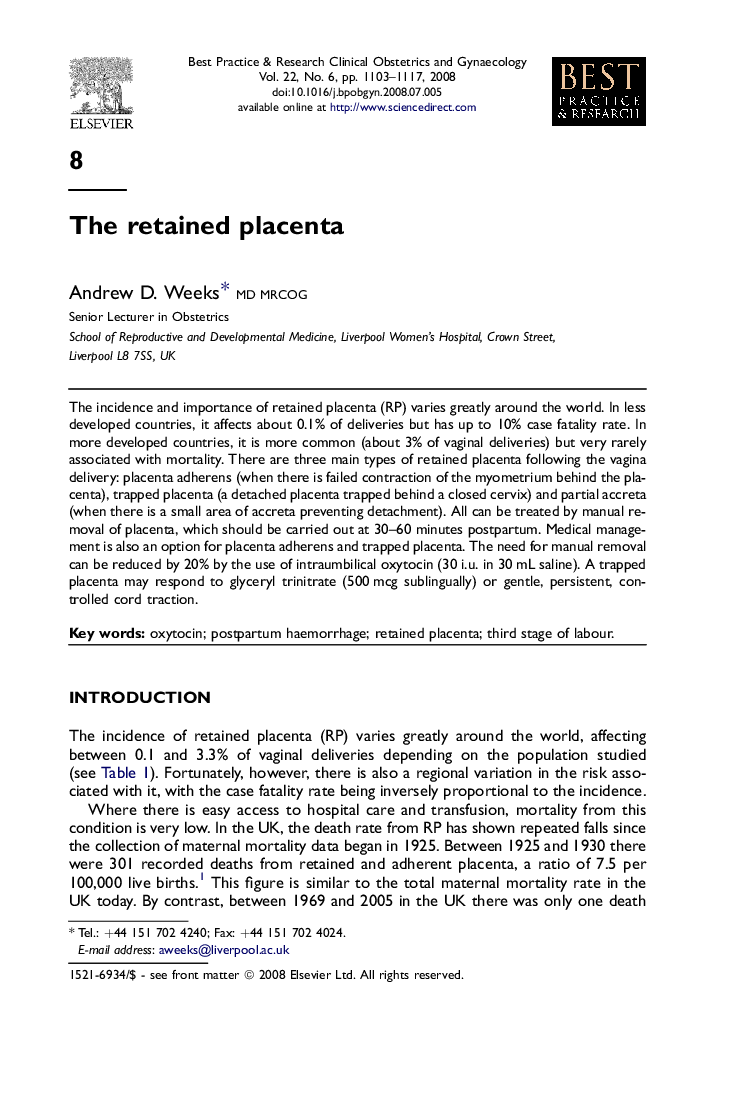| Article ID | Journal | Published Year | Pages | File Type |
|---|---|---|---|---|
| 3908092 | Best Practice & Research Clinical Obstetrics & Gynaecology | 2008 | 15 Pages |
The incidence and importance of retained placenta (RP) varies greatly around the world. In less developed countries, it affects about 0.1% of deliveries but has up to 10% case fatality rate. In more developed countries, it is more common (about 3% of vaginal deliveries) but very rarely associated with mortality. There are three main types of retained placenta following the vagina delivery: placenta adherens (when there is failed contraction of the myometrium behind the placenta), trapped placenta (a detached placenta trapped behind a closed cervix) and partial accreta (when there is a small area of accreta preventing detachment). All can be treated by manual removal of placenta, which should be carried out at 30–60 minutes postpartum. Medical management is also an option for placenta adherens and trapped placenta. The need for manual removal can be reduced by 20% by the use of intraumbilical oxytocin (30 i.u. in 30 mL saline). A trapped placenta may respond to glyceryl trinitrate (500 mcg sublingually) or gentle, persistent, controlled cord traction.
